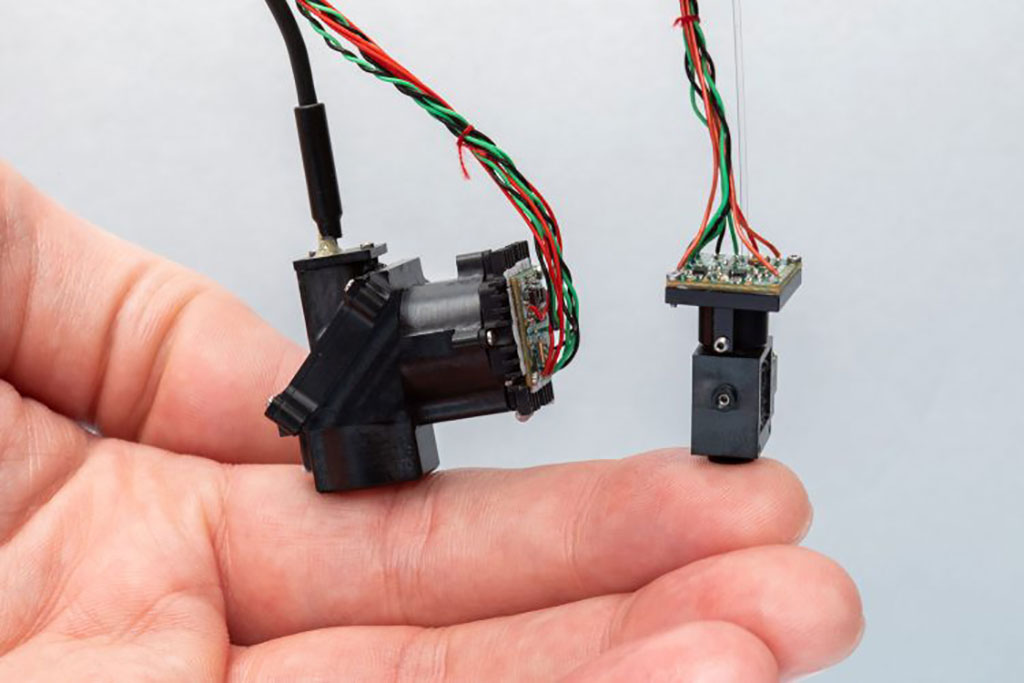Wearable Microscopes Offer Insight into Inaccessible Spinal Cord Regions
Posted on 22 Mar 2023
In the overall regulation of crucial functions from breathing to movement, the spinal cord acts as a messenger that transmits signals between the brain and the body. However, technology has hindered scientists' understanding on a cellular level of how the spinal cord relays pain signals. Now, scientists have developed wearable microscopes that offer unprecedented insight into the signaling patterns that occur within the spinal cords of mice. This technological breakthrough will significantly improve researchers' understanding of the neural basis of movement and sensations in both healthy and disease contexts, like chronic pain, itch, amyotrophic lateral sclerosis (ALS), and multiple sclerosis (MS).
The wearable microscopes created by scientists at The Salk Institute For Biological Studies (La Jolla, CA, USA) having a width of approximately seven to fourteen millimeters, comparable to the size of a human spinal cord or little finger, provide real-time, high-resolution, high-contrast, and multicolor imaging of previously inaccessible areas of the spinal cord. The wearable microscope can work in tandem with a microprism implant, consisting of a tiny reflective glass element placed next to the tissue regions of interest.

Utilizing these state-of-the-art microscopes, the scientists sought new information about the central nervous system. Specifically, they aimed to capture images of astrocytes, star-shaped, non-neuronal glial cells, present in the spinal cord. Previous studies conducted by the team indicated that astrocytes play an unexpected role in pain processing. The findings showed that squeezing the tails of mice triggered the activation of astrocytes, sending coordinated signals across spinal cord segments. Such unprecedented visualization of astrocyte activity and any cellular activity in moving animal's spinal cord regions was unachievable before the new microscopes were invented. The team has already kick-started experiments exploring how different pain conditions alter neuronal and non-neuronal activity in the spinal cord and how abnormal cell activity can be controlled by various treatments.
“These new wearable microscopes allow us to see nerve activity related to sensations and movement in regions and at speeds inaccessible by other high-resolution technology,” said senior author Axel Nimmerjahn, associate professor and director of the Waitt Advanced Biophotonics Center. “Our wearable microscopes fundamentally change what is possible when studying the central nervous system.”
“Being able to visualize when and where pain signals occur and what cells participate in this process allows us to test and design therapeutic interventions,” added Daniela Duarte, co-first author of one of the studies. “These new microscopes could revolutionize the study of pain.”
Related Links:
Salk Institute




 assay.jpg)








